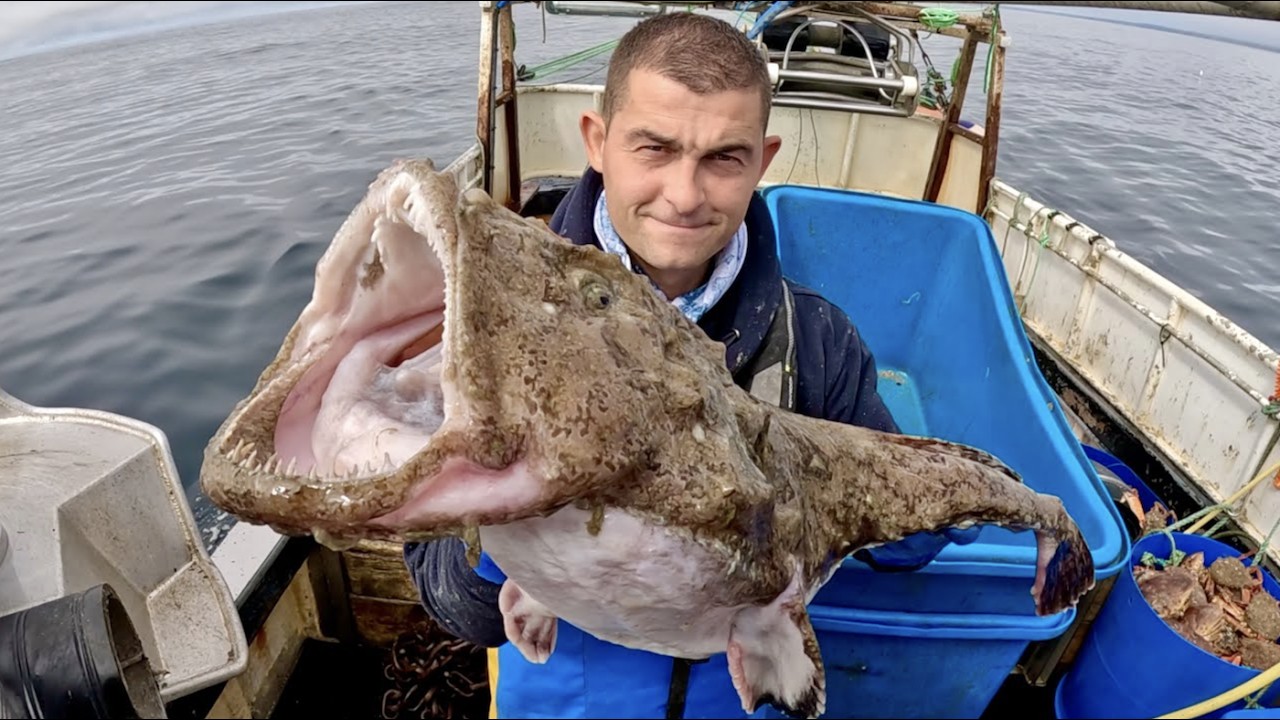
Monkfish might not win any beauty contests, but they sure are fascinating! These deep-sea dwellers, often called "sea devils," have some wild features and habits. Did you know monkfish can grow up to five feet long? Their enormous mouths and sharp teeth help them catch prey in the dark ocean depths. Monkfish are also masters of disguise, blending into the ocean floor to ambush unsuspecting fish. Despite their scary looks, they are a delicacy in many cuisines, especially in Europe and Asia. Curious about what makes these creatures so unique? Let's dive into 25 intriguing facts about monkfish!
What is a Monkfish?
Monkfish, also known as anglerfish, are fascinating creatures of the deep sea. These fish are known for their unique appearance and intriguing behaviors. Let's dive into some interesting facts about monkfish.
-
Monkfish have a large, flat head and a wide mouth filled with sharp teeth. This gives them a rather menacing look.
-
They are often referred to as "sea devils" due to their scary appearance and predatory nature.
-
Monkfish can grow up to 4 feet long and weigh as much as 50 pounds.
-
Their skin is usually dark brown or greenish, helping them blend into the ocean floor.
Habitat and Distribution
Monkfish are found in various parts of the world, primarily in the Atlantic Ocean. They prefer cold, deep waters where they can easily hunt for prey.
-
These fish are commonly found at depths ranging from 20 to 1,000 meters.
-
Monkfish are prevalent along the coasts of Europe and North America.
-
They often inhabit sandy or muddy bottoms where they can camouflage themselves.
-
Monkfish are solitary creatures, usually found alone rather than in schools.
Unique Hunting Techniques
Monkfish are ambush predators, using their unique adaptations to catch prey. Their hunting methods are both fascinating and effective.
-
They have a specialized spine on their head called an illicium, which acts like a fishing rod.
-
The illicium has a fleshy growth at the end, known as an esca, which lures prey close to the monkfish's mouth.
-
When prey gets close enough, the monkfish snaps its jaws shut with lightning speed.
-
Their diet mainly consists of smaller fish, crustaceans, and even seabirds.
Reproduction and Lifespan
Monkfish have interesting reproductive habits and a relatively long lifespan compared to other fish.
-
Female monkfish lay up to 1 million eggs at a time.
-
The eggs are released in a long, gelatinous ribbon that floats near the surface of the water.
-
After hatching, the larvae drift in the plankton until they are large enough to settle on the ocean floor.
-
Monkfish can live up to 20 years in the wild.
Culinary Uses
Monkfish are not just interesting to look at; they are also a popular choice in the culinary world. Their meat is prized for its taste and texture.
-
The meat of monkfish is often compared to lobster due to its firm, sweet flavor.
-
Monkfish liver, known as "ankimo" in Japanese cuisine, is considered a delicacy.
-
They are commonly used in soups, stews, and grilled dishes.
-
Monkfish are a sustainable seafood choice, as they are not overfished in most areas.
Conservation and Threats
Like many marine species, monkfish face various threats in their natural habitat. Conservation efforts are crucial to ensure their survival.
-
Overfishing and bycatch are significant threats to monkfish populations.
-
Climate change and ocean acidification also impact their habitats and prey availability.
-
Conservation measures include fishing quotas and protected areas to help maintain healthy populations.
-
Research and monitoring are ongoing to better understand monkfish ecology and improve conservation strategies.
-
Public awareness and responsible seafood choices can contribute to the protection of monkfish and other marine species.
The Final Bite on Monkfish
Monkfish, often called the "poor man's lobster," offers a unique taste and texture that sets it apart. Known for its ugly appearance, this fish hides a delicious secret beneath its rough exterior. Found in the North Atlantic, monkfish are bottom-dwellers, using their unique lure to attract prey. Their firm, sweet meat makes them a favorite in gourmet kitchens worldwide.
Despite their scary looks, monkfish are a sustainable choice, with responsible fishing practices in place. Rich in protein and low in fat, they provide a healthy option for seafood lovers. Whether grilled, baked, or sautéed, monkfish can be a versatile addition to your culinary repertoire.
So next time you're at the seafood market, don't shy away from this peculiar fish. Give monkfish a try and discover why chefs and foodies alike sing its praises.
Was this page helpful?
Our commitment to delivering trustworthy and engaging content is at the heart of what we do. Each fact on our site is contributed by real users like you, bringing a wealth of diverse insights and information. To ensure the highest standards of accuracy and reliability, our dedicated editors meticulously review each submission. This process guarantees that the facts we share are not only fascinating but also credible. Trust in our commitment to quality and authenticity as you explore and learn with us.
